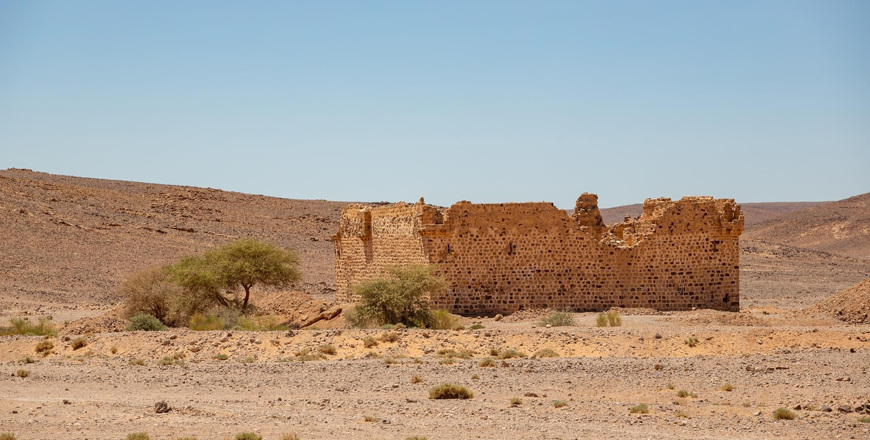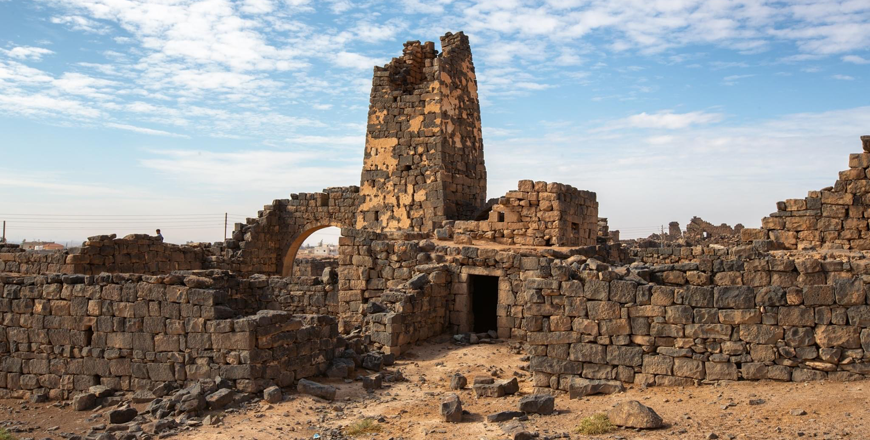You are here
Discovering Jordan’s historical heritage through photography
By Sophie Constantin - Aug 10,2024 - Last updated at Aug 11,2024

Tabbah’s work often plays a crucial role in supporting archaeologists with their research and preservation efforts (Photos by Bashar Tabbah)
AMMAN — Jordanian photographer Bashar Tabbah captivated the audience at the British Council for Research in the Levant (CBRL), with a “photographic exploration” that brought Jordan’s often-overlooked historical heritage into the spotlight.
Tabbah has distinguished himself in the realms of cultural, religious, and heritage photography, with a particular focus on the Islamic and Mediterranean worlds. His passion for history and his deep connection to the Levant have propelled him to document over 300 sites worldwide, and 350 sites within Jordan alone. “The more projects I realise, the deeper I delve into the archaeology of the Levant,” he said, combining his artistic lens with a passion for history.
Tabbah’s work often plays a crucial role in supporting archaeologists with their research and preservation efforts. One most significant contribution has been the extensive documentation of Jordan’s Badia, a region covering about 80% of Jordan, also known as “The Jordanian Eastern Desert.” For over more than a decade, Tabbah has explored this vast area, capturing its diverse landscapes, ancient structures, and multitude of inscriptions, leading to numerous publications and exhibitions.
For the CBRL lecture, Tabbah curated a selection of sites from his exploration, offering a “show and tell” lecture journeying through Northern, Central and Southern Badia, highlighting 25 sites that embody the region’s rich history and cultural significance.
The lecture started with Northern Badia, at Qasr Burqu, a site of great archaeological importance. Once an ancient lake and a hub of human activity for millennia, Qasr Burqu features a Roman fort from the first century AD, later transformed into a monastery, showcasing the layered history of the region.
Tabbah’s involvement in the aerial archaeology project with the CBRL and APAAME over the past seven years has further enriched his perspective. The contrast between experiencing these sites on the ground and from above is striking; ruins that may go unnoticed on foot reveal themselves clearly from the air. This is particularly true for desert kites – ancient hunting traps dating back over 2,000 years.
Harrah, a vast basalt desert in Northern Jordan, offers a landscape so unique that, as Tabbah said, “If Wadi Rum is considered Mars, then Harrah is the moon.” Navigating this rugged terrain is challenging, with massive basalt stones, yet, this harsh environment is also what Tabbah likes to call “Jordan’s Library”, or “Jordan’s Graffiti Wall”, home to hundreds of thousands of inscriptions and depictions of animals, such as camels, surrounded by Thamudic scripts. “The more you sit, the more inscriptions multiply around you.”
Tabbah also photographed Jawa, another remarkable site in Northern Jordan that offers a glimpse into prehistoric times with its Neolithic urban centre and one of the earliest dam –a marvel of ancient engineering.
Further south, Tabbah documented Deir Al Kahf, a former Roman fortress later converted into a monastery. Its architecture echoes the patterns found in other basalt-built sites like Umm Jimal and Azraq. Tabbah also captured Umm Jimal, now Jordan’s most recent UNESCO World Heritage site, with its barracks and Western Church.
In west of Umm Jimal, Tabbah explored the H5 Pumping Station, a unique site distinguished by its Art Deco houses built in the 30’s. These houses, designed for engineers and their families, were constructed with European materials. “Curiously, Jordan’s first cinema was located here, in a pumping station in the middle of the desert, and not in a big city”, Tabbah noted.
The region is also home to a collection of historical castles, including the Umayyad Castles such as Qasr Kharana and the famous Qasr Amra, renowned for its preserved frescoes. Nearby stands Qasr Hallabat, a Roman fort turned into an Umayyad palace, alongside with a historical mosque. Qasr Tuba, another Umayyad castle, bears the damage of heavy looting, yet remains a testament to the region’s rich history.
Tabbah also explored Wadi Dahek, known as the “White Desert”, is a stark valley surrounded by chalk cliffs, offering a striking contrast to the darker landscapes of the Badia.


Related Articles
AMMAN — The Royal Society for the Conservation of Nature (RSCN) has submitted the nomination of Burqu as a nature reserve to the Ministry of
AMMAN — If Petra is the “rose-red” city, Um Al Jimal is a city of “all black”, constructed exclusively with dark, volcanic basalt rock.
AMMAN — With each trip to one of Jordan’s archaeological sites, a local photographer’s fascination and passion to document their beauty grew














